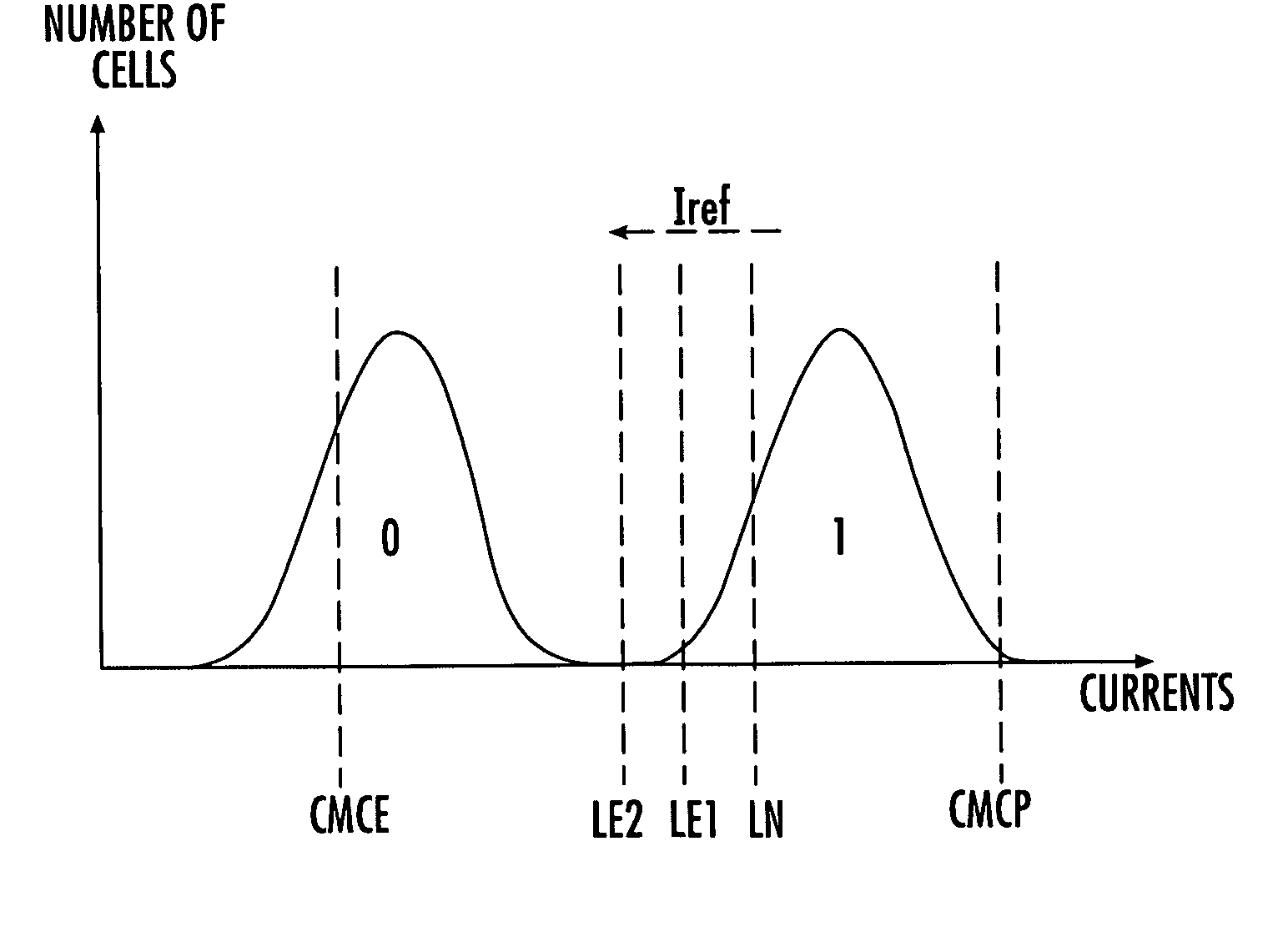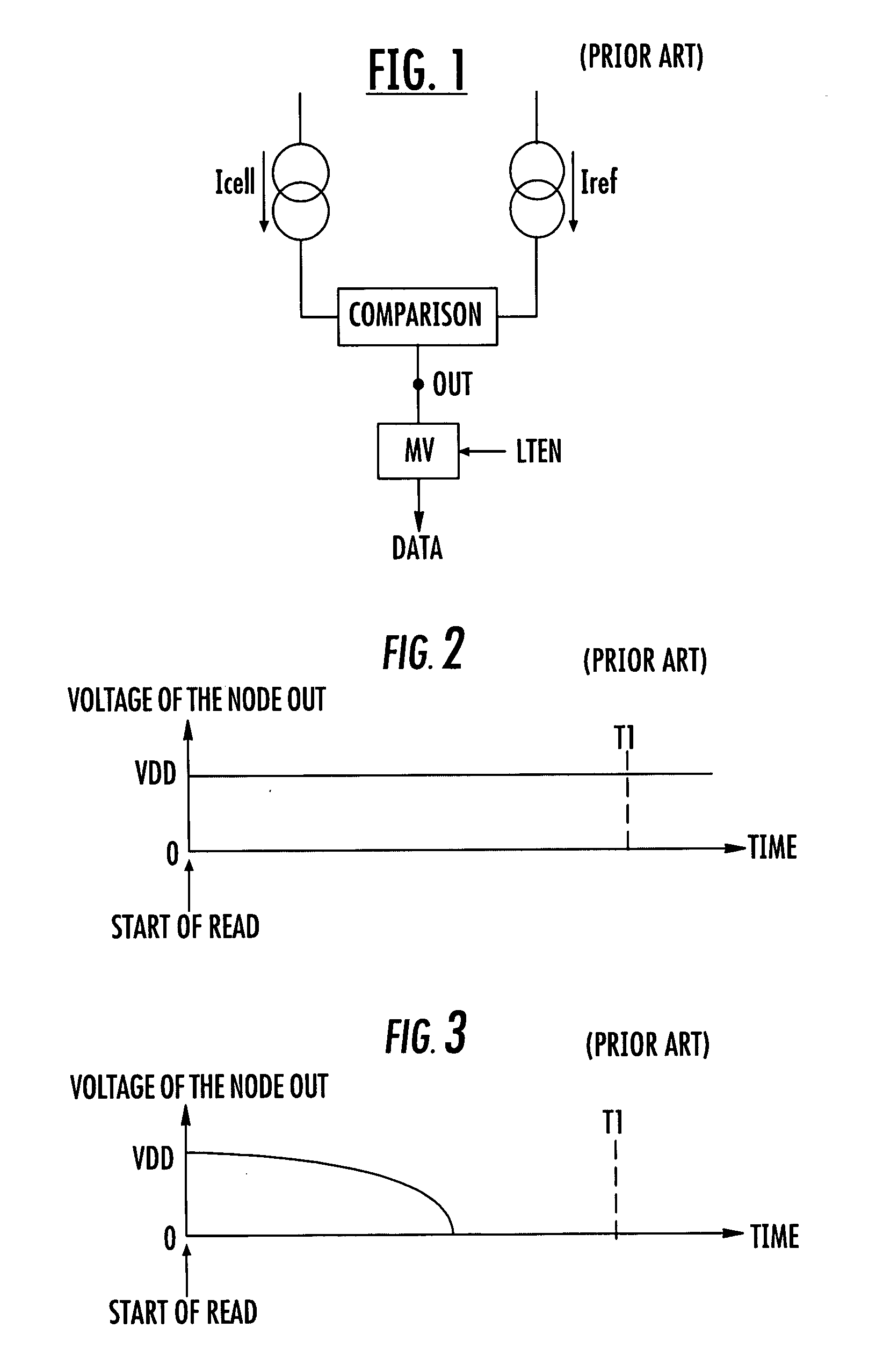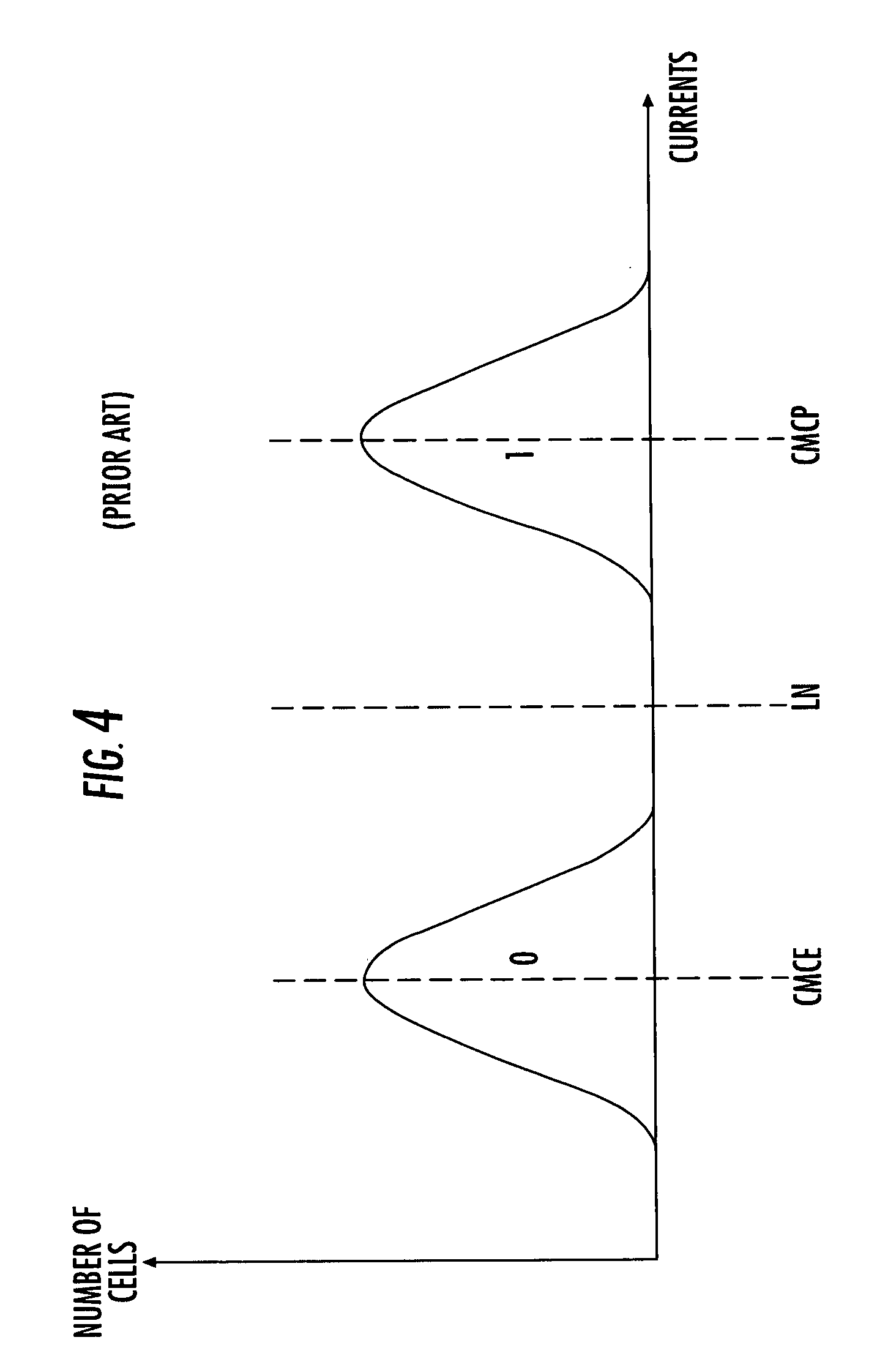Method of detecting and correcting errors for a memory and corresponding integrated circuit
- Summary
- Abstract
- Description
- Claims
- Application Information
AI Technical Summary
Benefits of technology
Problems solved by technology
Method used
Image
Examples
first embodiment
[0043] An object of the invention is aimed at carrying out several error detections-corrections for the n data items of the code block, obtained by modifying the level of the reference current Iref. For example, FIG. 6 illustrates such a correction system in the case where the mechanism of degradation of the data by loss of charge is significant and leads in particular to a shift in the population of the cells. Such is the case in particular for floating gate nonvolatile memories.
[0044] Thus, a first read is carried out with the reference level LN corresponding to a normal read. The set of n elements of the code block thus read provides a first result. If the detection code indicates the presence of an error, a second read using a reference level LE1 that is less than the level LN is carried out. With the read reference current being lower, the number of errors decreases. Also, these operations are iteratively repeated while decreasing the reference current Iref with each iteration ...
second embodiment
[0058] The invention is not limited to the modes of implementation and embodiments just described. Specifically according to the invention, the instant T1 of consideration of the result of the comparison, that is to say the duration of reading, is modified as read parameter, rather than the reference current. This is illustrated in FIG. 10. In this figure, curve C3 represents the profile of the voltage of the node OUT of a programmed cell (logic “1”) degraded during a read with a reference current Iref having the standard level LN.
[0059] It is seen that by taking into consideration the result of the comparison at the standard instant T1, a logic “0” is obtained, that is to say an erroneous reading result. On the other hand by decreasing the duration of read, that is to say by performing the recording of the result of the comparison at earlier instants TE, for example at the instant TE2, this reading error is eliminated.
[0060] Care should be taken not to decrease the duration of rea...
PUM
 Login to View More
Login to View More Abstract
Description
Claims
Application Information
 Login to View More
Login to View More - R&D
- Intellectual Property
- Life Sciences
- Materials
- Tech Scout
- Unparalleled Data Quality
- Higher Quality Content
- 60% Fewer Hallucinations
Browse by: Latest US Patents, China's latest patents, Technical Efficacy Thesaurus, Application Domain, Technology Topic, Popular Technical Reports.
© 2025 PatSnap. All rights reserved.Legal|Privacy policy|Modern Slavery Act Transparency Statement|Sitemap|About US| Contact US: help@patsnap.com



